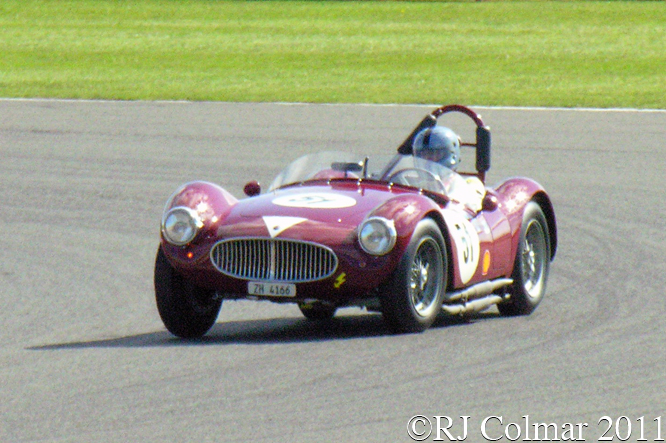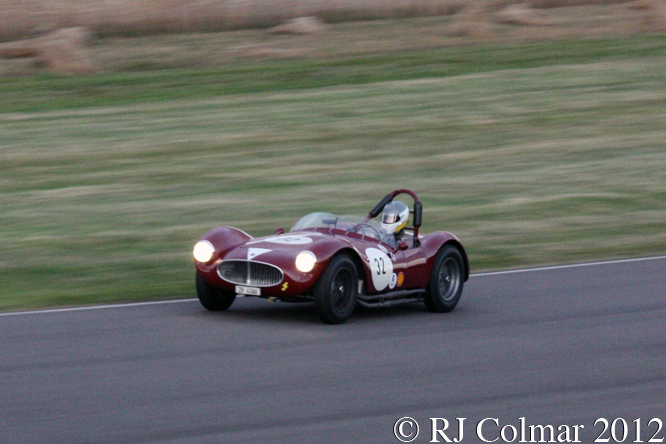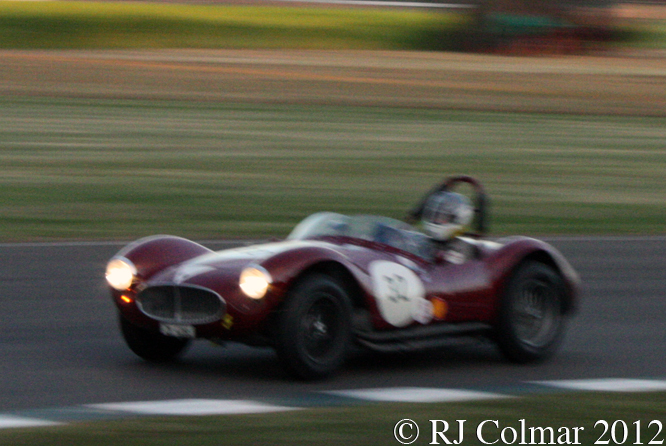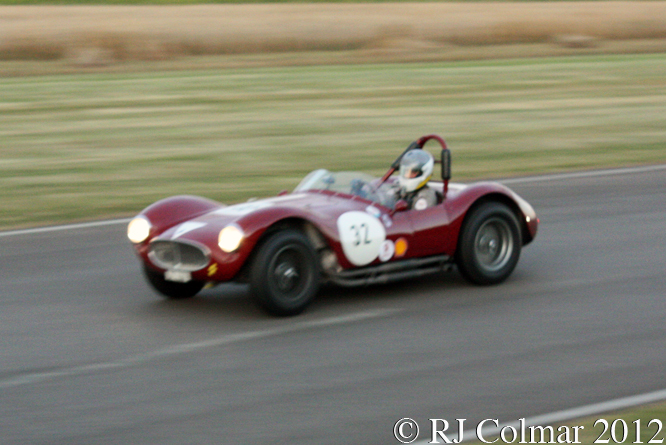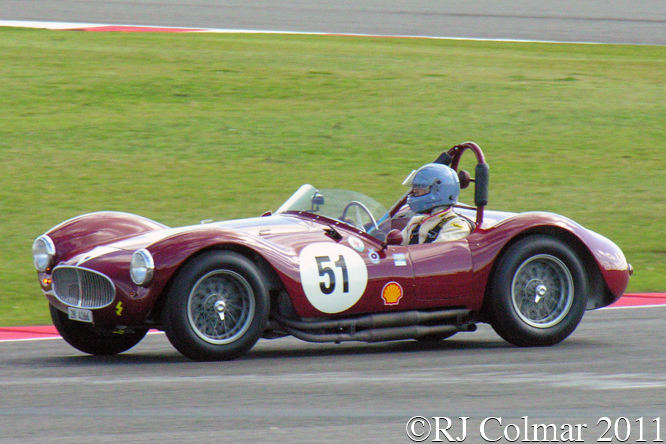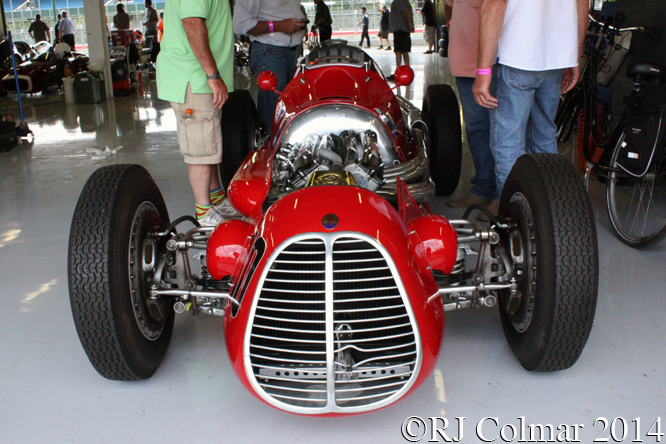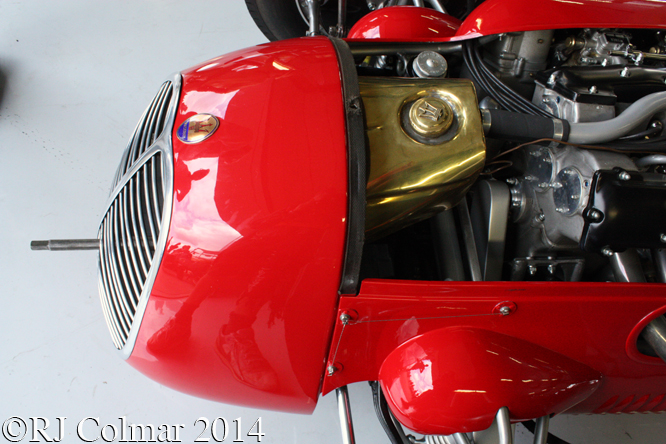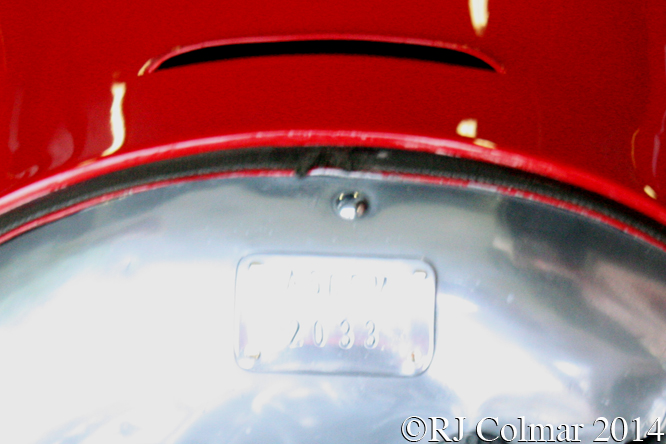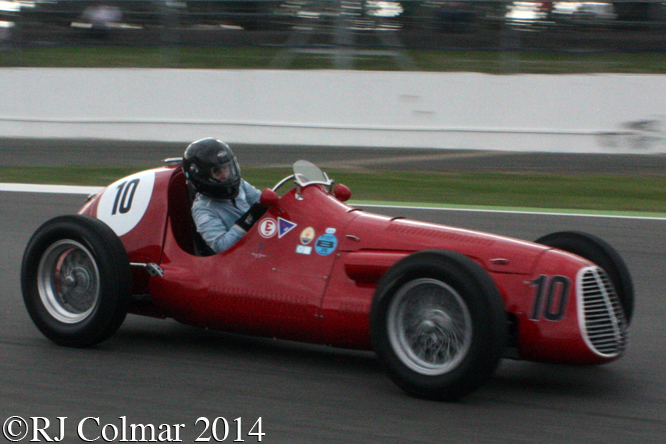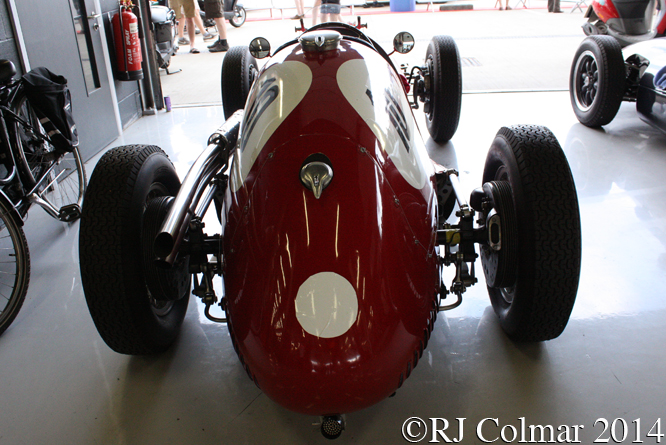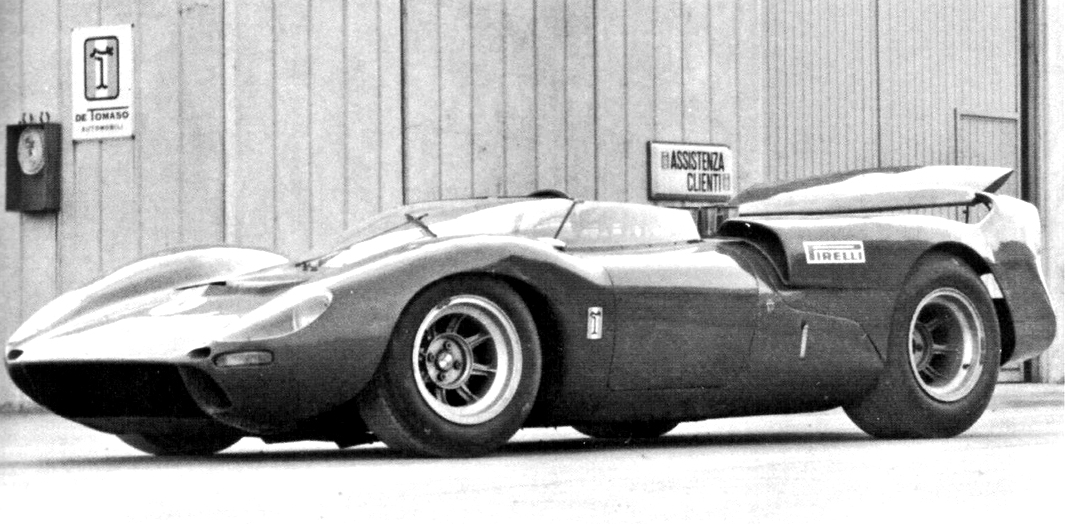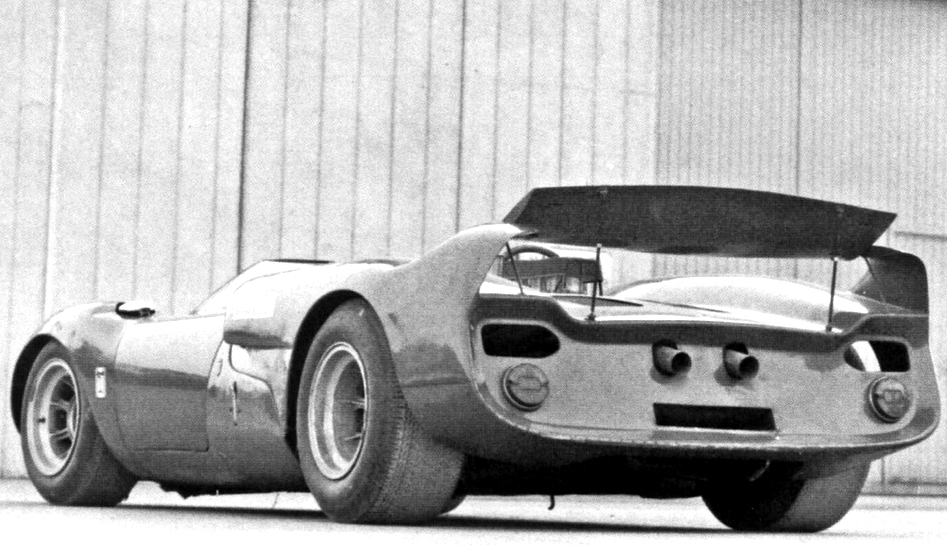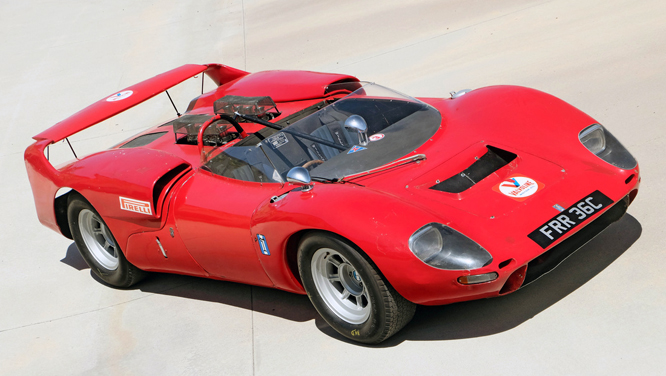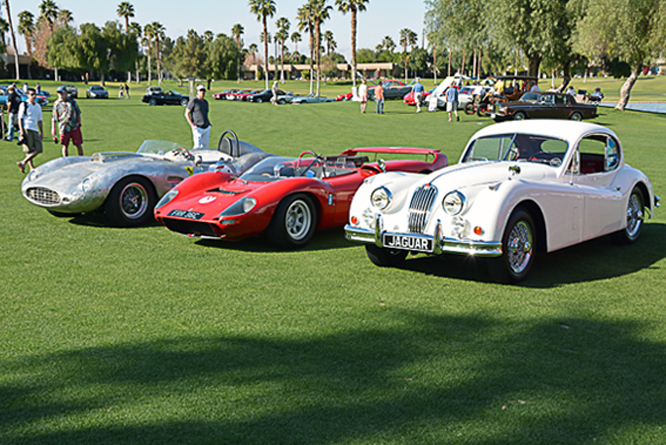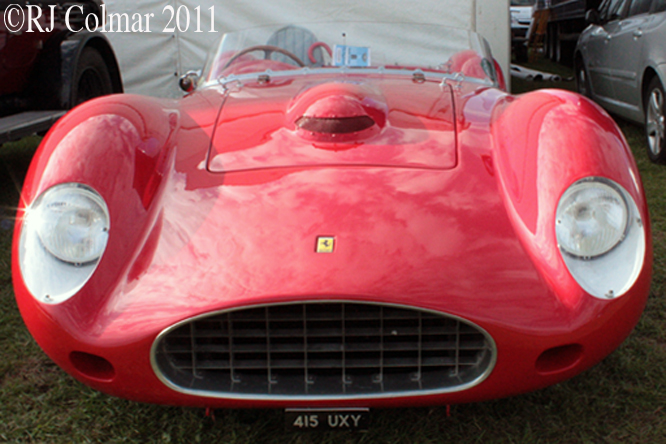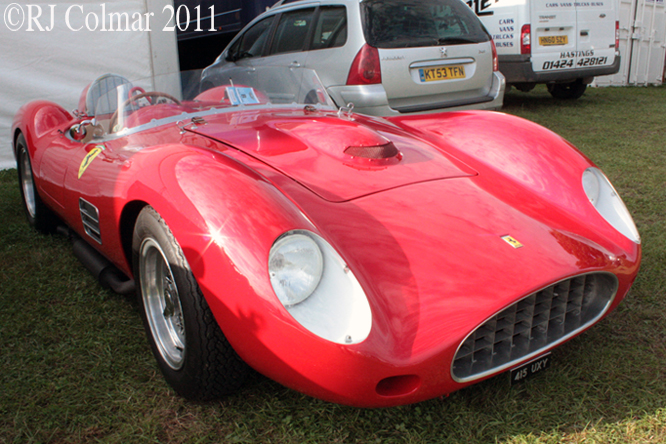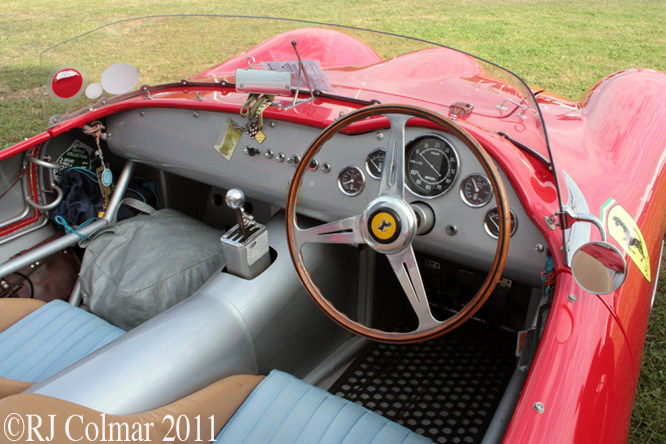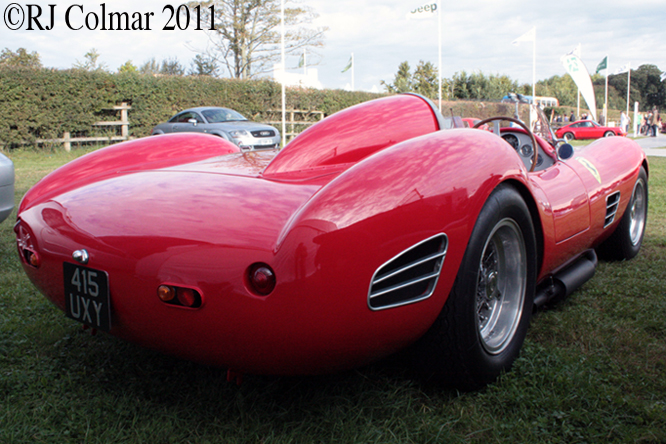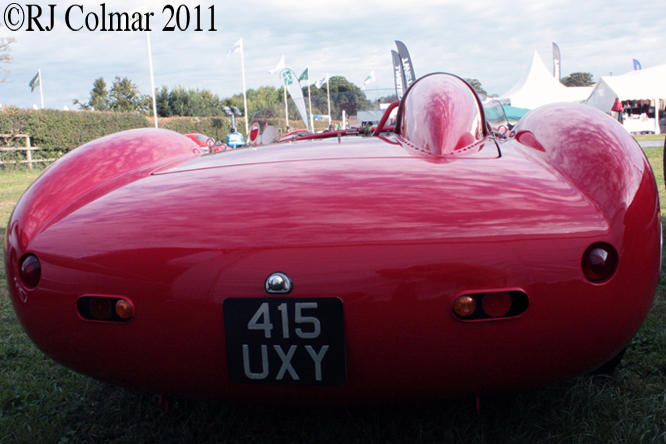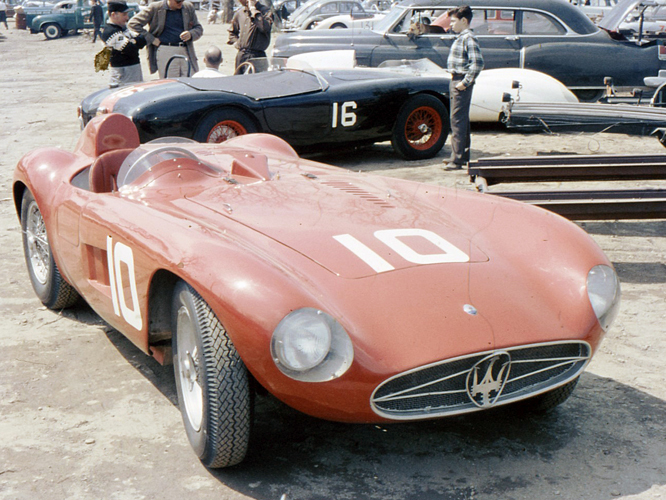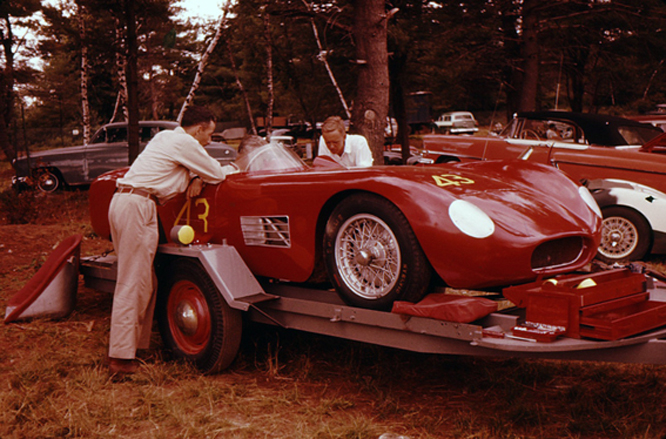In 1952 Giulio Alfieri led the development of the Maserati Type 52, which would become known as the Maserati 200S, that was to replace the iron block A6GCS sports racing cars.
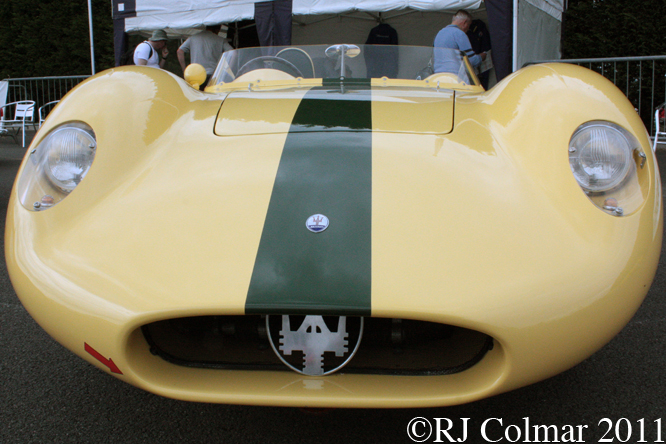
The new alloy block 2 litre / 122 cui 4 cylinder motor featured 2 valves per cylinder actuated by two overhead camshafts.

The chassis frame shared many components with the Maserati 150S and the rear axle was inherited from the A6GCS. The first three 200S frames were manufactured in house while 25 more were outsourced to Gilco.

The first five 200S aluminium bodies were fabricated by Celestino Fiandri with the remainder, as seen on today’s featured chassis #2408 by Fantuzzi.
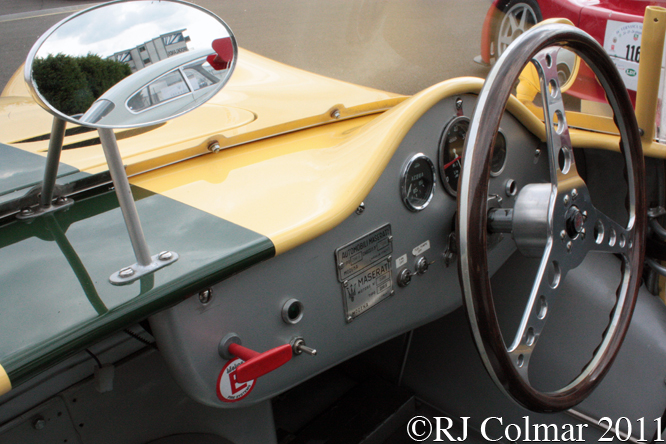
Chassis #2408 was sold in September 1956 to Brazilian Severino Silva who is known to have raced Maserati sports cars on at least two occasions bookending 1957.
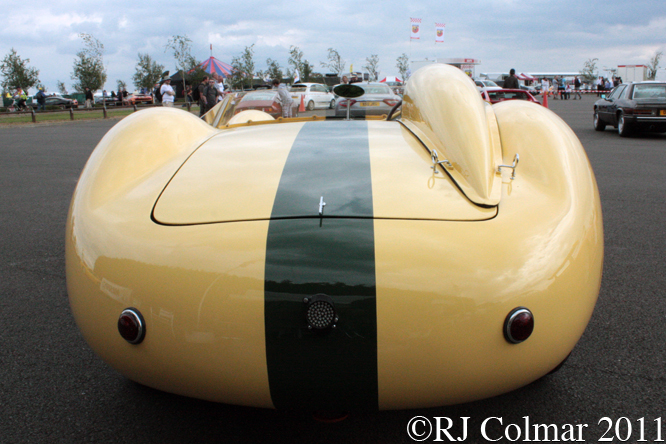
In December 1957 Severino entered his car, for himself and Italian Corrado Manfredini to drive in the Sao Palo Grand Prix. Severino and Corrado finished 6th after starting from 10th place on the grid in this vehicles only known in period competitive event.
I believe Roger Lucas has been the owner of #2408 since 2006 during which period he briefly had it painted red, but by 2009 it was carrying it’s Brazilian colours again.
Thanks for joining me on this “Ditching The Iron Block” edition of “Gettin’ a li’l psycho on tyres” I hope you will join me again, for a look at a Bugatti tomorrow. Don’t for get to come back now !


